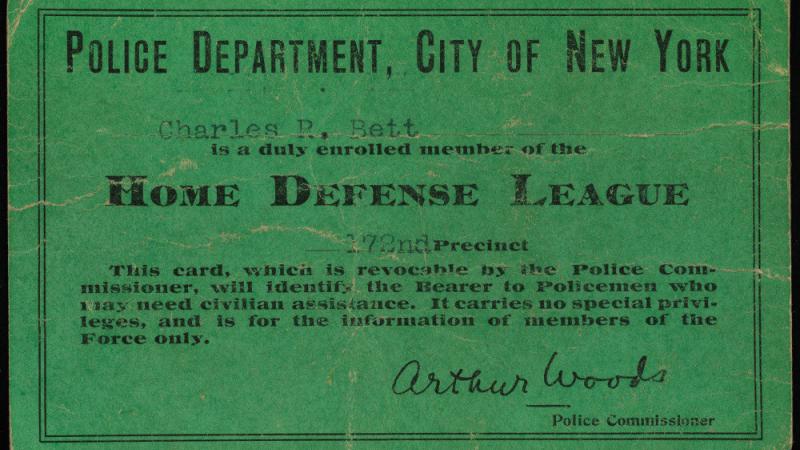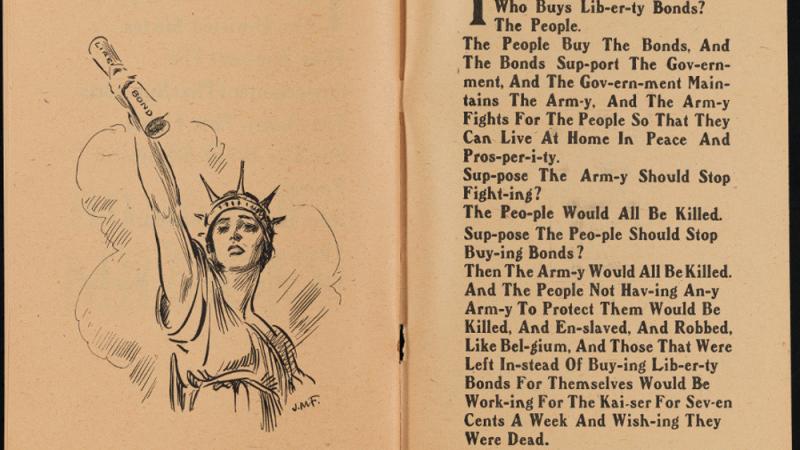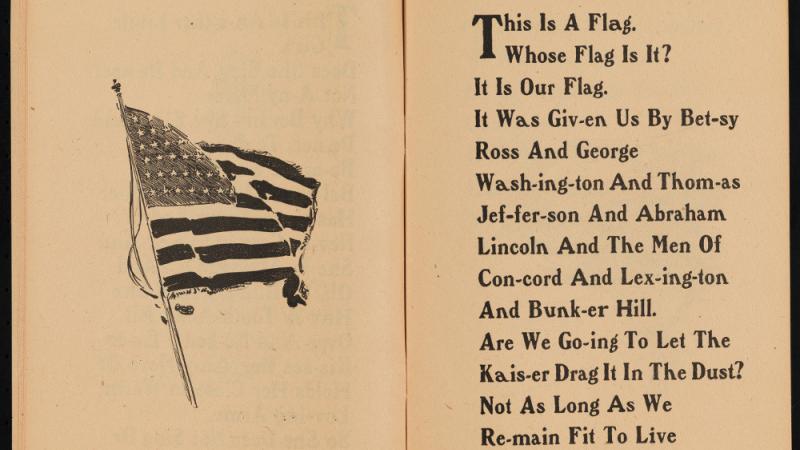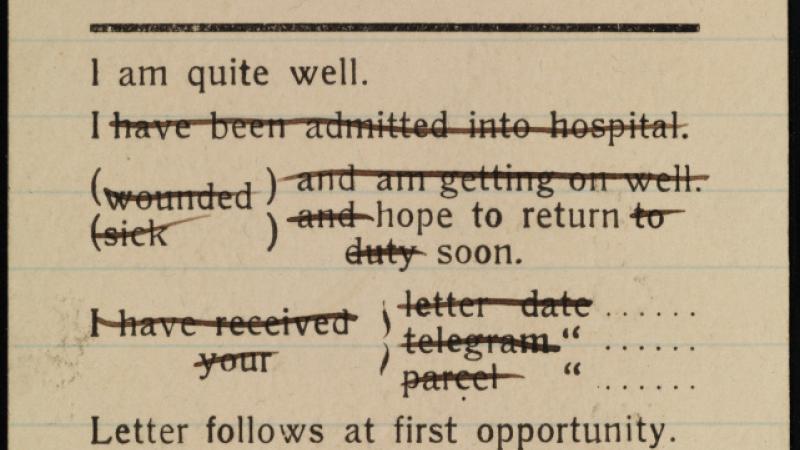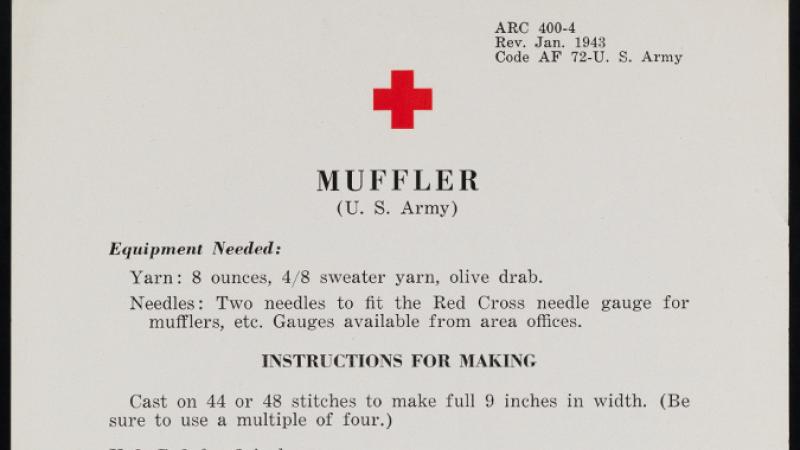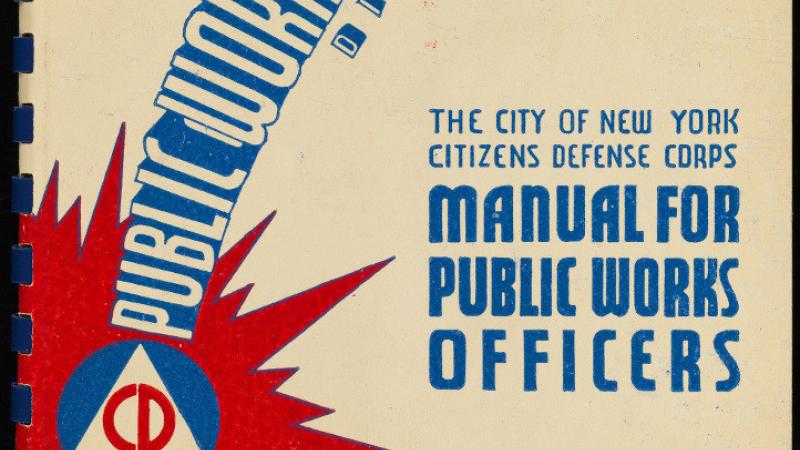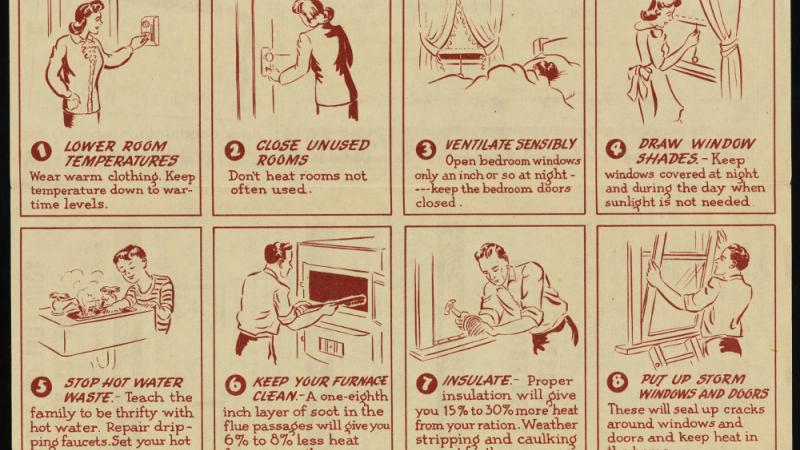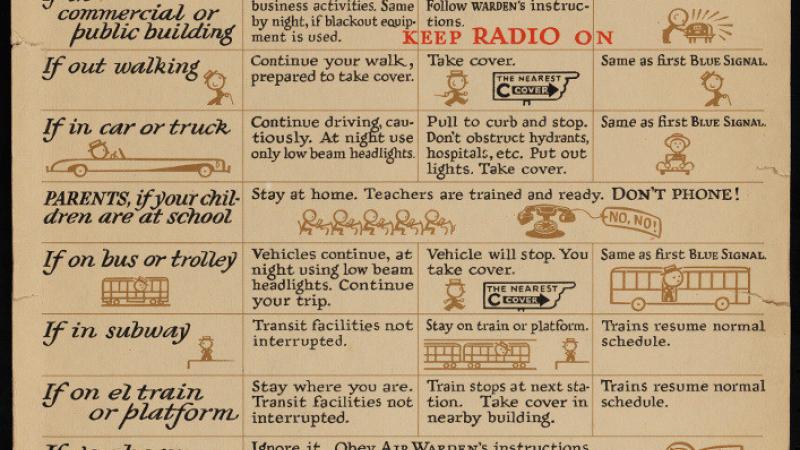Standing Together at Home: World War I and World War II Ephemera at the Museum of the City of New York
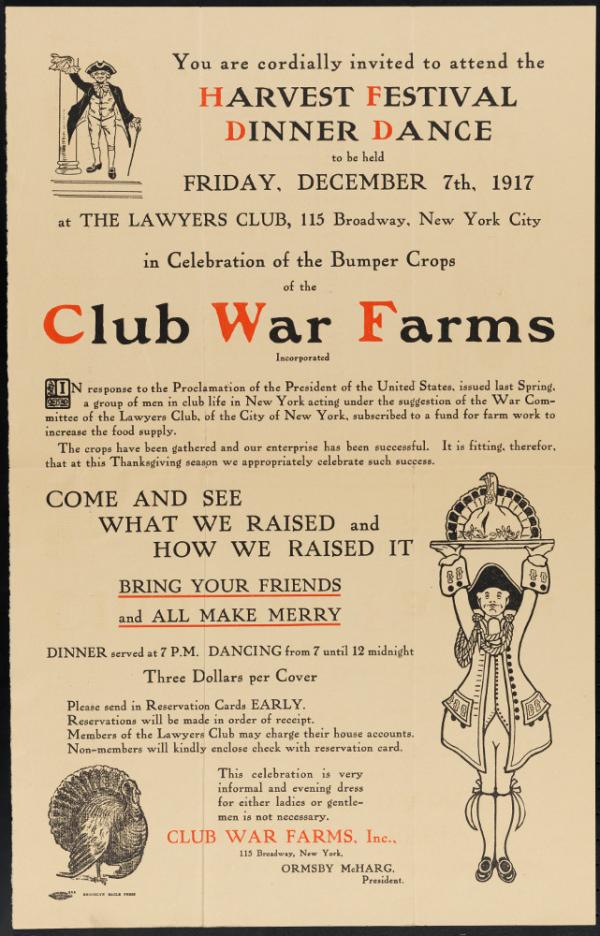
Invitation to the Harvest Festival Dinner Dance, 1917, in the Collection on World War I and World War II.
Image courtesy of the Museum of the City of New York. 40.90.211.

Invitation to the Harvest Festival Dinner Dance, 1917, in the Collection on World War I and World War II.
Image courtesy of the Museum of the City of New York. 40.90.211.
Why did a group of New York City lawyers get together to create a garden that produced enough food to feed a small town? How could one become a member of the Citizens Home Defense League? Who was encouraged to “knit your bit”? These are just a few questions provoked by the rich Ephemera Collections at the Museum of the City of New York. The 7,200-item collection covers the colonial era to the present day, and includes advertisements, handbills, pamphlets, menus, invitations, medals, pins, buttons, badges, souvenirs, and printed textiles like ribbons and sashes. With NEH support, the Museum is currently processing, cataloging, rehousing, and digitizing this major collection of printed and three-dimensional ephemera. Digital images and guides will soon be available in the Museum’s Collections Portal.
Life changed for Americans in many ways during the World Wars, including for those left at home. In both 1917 and 1941, the United States entered conflicts already raging abroad. Events on the front lines dictated the experience of war for citizens at home. Civilians tried to combat food shortages, rally financial support, conserve vital materials, and contribute to the country’s safety—all while receiving news from the front. At the same time controversies arose, people disagreed, and the effects of war were felt keenly at home. The Museum of the City of New York’s Ephemera Collection holds material evidence of the vivid experiences of ordinary citizens during wartime, in all their difficulty and complexity.
“Food will win the war” was just one slogan of the U.S. Food Administration, established by President Woodrow Wilson shortly after the United States entered the war in 1917, and headed by someday-President Herbert Hoover. Meat, wheat, and sugar were key, but food shortages in general seemed a very real threat. The agency encouraged citizens to get involved through “Meatless Tuesdays,” “Wheatless Wednesdays,” by eating less candy—and by creating “food gardens for defense.” The Lawyers Club of New York took on the challenge of increasing the United States’ food supply. An invitation to a “Harvest Festival Dinner Dance” just after Thanksgiving announced a celebration of the group’s “Bumper Crops”—and this wasn’t an exaggeration! Initiated on April 6, 1917, by autumn the Lawyers Club garden on Long Island had yielded 5,000 bushels of corn, 10,000 turnips, 6,000 carrots, 750 navy beans, 2,500 lima and string beans, and five tons of millet.
In addition to increasing the food supply, Americans were also asked to help preserve order in New York by participating in the Home Defense League. Intended to fill out the ranks as policemen went to war, members of the Home Defense League engaged in military-style drills, organized meetings and parades to advocate United States' entry into the war, and assisted municipal authorities in activities like guarding infrastructure and public health. There were also rumors that the organization’s members eventually often “policed the populace” by reporting fellow citizens for potentially disruptive sentiments.[1] A Home Defense League membership card (shown here for Charles Bett of New York’s 172nd Precinct), carried with it the authority to disperse crowds, make arrests, and respond to suspicious reports. The Home Defense League had no restrictions with regard to age, social status, or profession. Its members carried clubs instead of guns, agreed to walk at least two miles a day, and trained two or three times a week. By mid-1917, 22,000 citizens had enrolled in the organization in New York City alone.
To finance the war, the Liberty Loan Committee coordinated efforts to sell U.S. Treasury Bonds. Since bond sales lagged initially, the Committee pursued an aggressive strategy. An illustrated “Liberty Loan Primer,” written by Porter Emerson Browne and illustrated by poster artist James Montgomery Flagg, is one example. In a sing-song style, the pamphlet suggested, perhaps harshly, that if people did not buy the bonds they soon “Would Be Work-ing For The Kai-ser For Sev-en Cents A Week And Wish-ing They Were Dead.”[2]
Of course, those on the home front waited for news from loved ones at war. The post card from soldier Lawrence Doyle shown here is of the sort introduced by the British in 1914, for infantrymen to send to family and friends. Designed in part to reduce the need for censorship, the cards forbade any writing further than what was pre-printed on the card. Amidst criticism of the mass produced cards as dehumanizing, Paul Fussell, chronicler and critic of the Great War, noted dryly that “the post card allows one to admit to no state of health between being ‘quite’ well, on the one hand, and, on the other, being so sick that one is in the hospital.” Despite these strictures, some infantrymen developed codes to communicate more with their loved ones than the cards were intended to let on.[3]
One civilian support effort that spanned both wars was the “Knit Your Bit” campaign. Part of that campaign was distribution of patterns by the Red Cross, this one for knitting a muffler. The organization supplied patterns for sweaters, socks, mufflers, fingerless mitts, toe covers, stump covers, and other garments. During the First World War, stores sold wool in “genuine army color” and material “suitable for making Red Cross bags.” Similarly, the muffler pattern here stipulates knitting in “olive drab” wool. The interest in knitting for troops continued into the World War II. After Life magazine ran a story on knitting with detailed instructions in November 1941, citizens began to contribute their skills in this arena. This set of instructions, from 1943, also offers that gauges (samples to determine stitches per inch) were available at area Red Cross offices.[4]
In addition to increasing supplies of food and clothing, citizens on the home front during both wars were asked to conserve resources. The first item rationed during the Second World War was tires, in 1941. Beginning in 1942, civilians received ration books for bicycles, footwear, silk, nylon, firewood, gas, meat, lard, shortening, cheese, and other foods. In addition to food, fuel of any kind was particularly scarce. Citizens were urged to make these goods last in order to support the war effort. The instructions depicted in the flier here show how to conserve fuel oil by wearing warm clothing, keeping windows covered, and being thrifty with hot water.
During the Second World War as during the First, American citizens were expected to assist well beyond rationing of food and home goods. President Roosevelt established the Office of Civilian Defense in 1941, appointing New York Mayor F.H. La Guardia as its head. Materials produced by the Office include a manual for the Public Works Emergency Division and Air Raid Instructions produced by the agency for placement in elevators, kitchens, or other on prominent walls during the war. The Office instructed enrolled civilian workers on defense mechanisms like supervised blackouts, protection against gas, bomb reconnaissance, and guarding industrial plants and public buildings. The Public Works Emergency Division also issued regulations for large apartment buildings and concert halls during air raids and blackouts, as well as providing social service functions like road repair, education, youth recreation, consumer programs, child care, health, medical care, nursing, and housing. These last activities reflected the involvement of Eleanor Roosevelt, who felt that civilian defense should not be limited to air raids and blackouts, but also encompass social welfare programs like day care, maternal and child health, and child welfare. Critics lambasted Mrs. Roosevelt for this view, and Mayor La Guardia did not favor it. Eleanor Roosevelt resigned in 1942, and thereafter the Office of Civilian Defense focused on a narrower vision of national defense. Its offices closed in 1944, and it terminated all operations in 1945.[5]
The Museum of the City of New York’s project “Illuminating New York City History: Processing, Cataloging, Digitizing, and Rehousing the Museum’s Ephemera Collections” was awarded a Humanities Collections and Reference Resources grant of $125,000 in 2014. Stay tuned to the City Museum’s blog for updates on the project’s progress!
[1] Ross J. Wilson, New York and the First World War: Shaping an American City (Ashgate, 2014).
[2] Celia Kingsbury, For Home and Country: World War I Propaganda on the Home Front (University of Nebraska Press, 2010).
[3] Paul Fussell, The Great War in Modern Memory (Oxford University Press, 1975). http://blog.hrc.utexas.edu/2012/08/02/paul-fussell/
[4] “Home Front Friday: Knit Your Bit,” The National WWII Museum. http://www.nww2m.com/category/knit-your-bit/
[5] “Office of Civilian Defense,” The Eleanor Roosevelt Papers Project, George Washington University. http://www.gwu.edu/~erpapers/teachinger/glossary/office-civilian-defense.cfm
